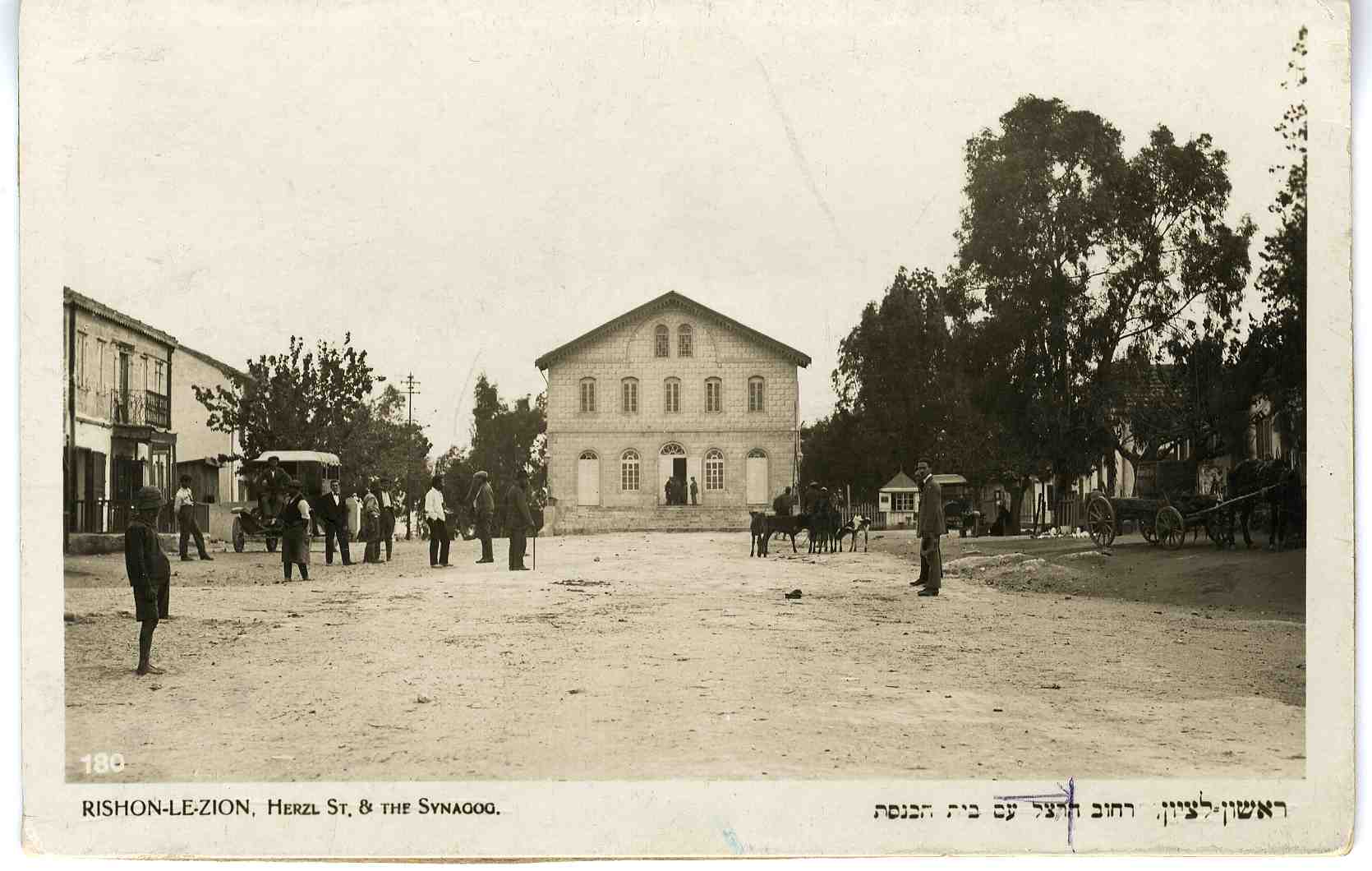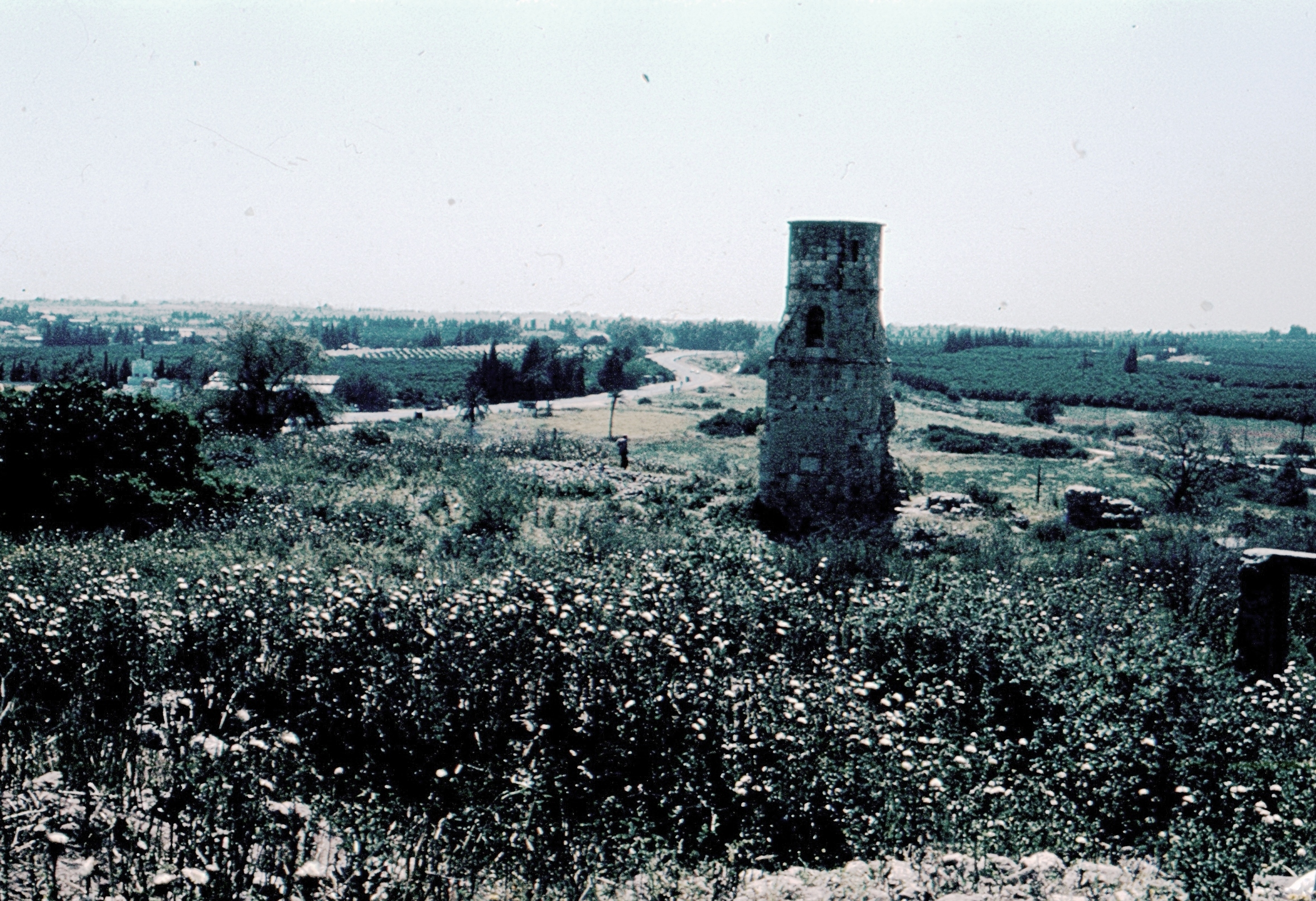|
Beit Hanan
Beit Hanan ( he, בֵּית חָנָן) is a moshav in central Israel. Located around two kilometers west of Ness Ziona, it falls under the jurisdiction of Gan Raveh Regional Council. In its population was . History Beit Hanan founded during the Hanukkah holiday of 1929 by Jewish immigrants from Bulgaria, Beit Hanan was the first Jewish agricultural community to be established after the 1929 Palestine riots. The name is taken from the Bible, specifically (1 Kings 4:9).Carta's Official Guide to Israel and Complete Gazetteer to all Sites in the Holy Land. (3rd edition 1993) Jerusalem, Carta, p. 110, According to a census conducted in 1931 by the British Mandate authorities, Beit Hanan had a population of 178 inhabitants, in 50 houses.Mills, 1932, p 18/ref> In 2007, Beit Hanan had of farmland. The main economic branches are eggs, orchards (pecan, citrus, avocado, mango, anona and olives) and greenhouses (flowers, vegetables and seedlings). The moshav also has banquet facili ... [...More Info...] [...Related Items...] OR: [Wikipedia] [Google] [Baidu] |
Bulgarian Jews
The history of the Jews in Bulgaria goes back almost 2,000 years. Jews have had a continuous presence in historic Bulgarian lands since before the 2nd century CE, and have often played an important part in the history of Bulgaria. Today, the majority of Bulgarian Jews live in Israel, while modern-day Bulgaria continues to host a modest Jewish population. Roman era Jews are believed to have settled in the region after the Roman conquest in 46 CE. Ruins of "sumptuous" second-century synagogues have been unearthed in Philipopolis (modern Plovdiv), Nicopolis ( Nikopol), Ulpia Oescus (Gigen, Pleven Province), and Stobi (now in North Macedonia). The earliest written artifact attesting to the presence of a Jewish community in the Roman province of Moesia Inferior is a late 2nd-century CE Latin inscription found at Ulpia Oescus bearing a menorah and mentioning ''archisynagogos''. Josephus testifies to the presence of a Jewish population in the city. A decree of Roman Emperor ... [...More Info...] [...Related Items...] OR: [Wikipedia] [Google] [Baidu] |
1931 Census Of Palestine
The 1931 census of Palestine was the second census carried out by the authorities of the British Mandate for Palestine. It was carried out on 18 November 1931 under the direction of Major E. Mills after the 1922 census of Palestine. * Census of Palestine 1931, Volume I. Palestine Part I, Report. Alexandria, 1933 (349 pages). * Census of Palestine 1931, Volume II. Palestine, Part II, Tables. Alexandria, 1933 (595 pages). References Further reading * Miscellaneous short extracts from the census reports at Emory University * J. McCarthy, The Population of Palestine, Columbia University Press (1988). This contains many pages of tables extracted from the census reports. {{Authority control Censuses in Mandatory Palestine Census Of Palestine, 1931 Documents of Mandatory Palestine Palestine November 1931 events 1931 documents ... [...More Info...] [...Related Items...] OR: [Wikipedia] [Google] [Baidu] |
Populated Places In Central District (Israel)
Population typically refers to the number of people in a single area, whether it be a city or town, region, country, continent, or the world. Governments typically quantify the size of the resident population within their jurisdiction using a census, a process of collecting, analysing, compiling, and publishing data regarding a population. Perspectives of various disciplines Social sciences In sociology and population geography, population refers to a group of human beings with some predefined criterion in common, such as location, race, ethnicity, nationality, or religion. Demography is a social science which entails the statistical study of populations. Ecology In ecology, a population is a group of organisms of the same species who inhabit the same particular geographical area and are capable of interbreeding. The area of a sexual population is the area where inter-breeding is possible between any pair within the area and more probable than cross-breeding with ind ... [...More Info...] [...Related Items...] OR: [Wikipedia] [Google] [Baidu] |
Moshavim
A moshav ( he, מוֹשָׁב, plural ', lit. ''settlement, village'') is a type of Israeli town or settlement, in particular a type of cooperative agricultural community of individual farms settler, pioneered by the Labor Zionism, Labour Zionists between 1904 and 1914, during what is known as the Second Aliyah, second wave of ''aliyah''. A resident or a member of a moshav can be called a "moshavnik" (). The moshavim are similar to kibbutzim with an emphasis on community labour. They were designed as part of the Zionist state-building programme following the green revolution Yishuv ("settlement") in the Mandatory Palestine, British Mandate of Palestine during the early 20th century, but in contrast to the collective farming kibbutzim, farms in a moshav tended to be individually owned but of fixed and equal size. Workers produced crops and other goods on their properties through individual or pooled labour with the profit and foodstuffs going to provide for themselves. Mosha ... [...More Info...] [...Related Items...] OR: [Wikipedia] [Google] [Baidu] |
Gadna (Israel)
Gadna ( he, גדנ״ע) is an Israeli military program that prepares young people for military service in the Israel Defense Forces. It was established before the foundation of the State of Israel and was anchored in law in 1949. Today it is a one-week program of discipline and military training usually under commanders serving with the Nahal infantry brigade. Gadna hosts an estimated 19,000 Israeli youth annually, as well as numerous foreign youths. History Gadna, an abbreviation for ''Gdudei No'ar'' (; lit. ''youth battalions''), was an organization for youth created before the Israeli Declaration of Independence. Alongside preliminary training for military service, Gadna clubs taught Zionist history, promoted love of the Land of Israel and encouraged members to engage in farming and volunteerism. Social activities included readings of ideological material from Labor Zionist newspapers and publications. The program was established in the early 1940s by the Haganah, which bec ... [...More Info...] [...Related Items...] OR: [Wikipedia] [Google] [Baidu] |
Yishuv
Yishuv ( he, ישוב, literally "settlement"), Ha-Yishuv ( he, הישוב, ''the Yishuv''), or Ha-Yishuv Ha-Ivri ( he, הישוב העברי, ''the Hebrew Yishuv''), is the body of Jewish residents in the Land of Israel (corresponding to the southern part of Ottoman Syria until 1918, OETA South 1917–1920, and Mandatory Palestine 1920–1948) prior to the establishment of the State of Israel in 1948. The term came into use in the 1880s, when there were about 25,000 Jews living across the Land of Israel and continued to be used until 1948, by which time there were some 630,000 Jews there. The term is still in use to denote the pre-1948 Jewish residents in the Land of Israel. A distinction is sometimes drawn between the Old Yishuv and the New Yishuv. The Old Yishuv refers to all the Jews living in the Land of Israel before the first Zionist immigration wave (''aliyah'') of 1882, and to their descendants who kept the old, non-Zionist way of life until 1948. The Old Yishuv resid ... [...More Info...] [...Related Items...] OR: [Wikipedia] [Google] [Baidu] |
Natural Reserve
A nature reserve (also known as a wildlife refuge, wildlife sanctuary, biosphere reserve or bioreserve, natural or nature preserve, or nature conservation area) is a protected area of importance for flora, fauna, or features of geological or other special interest, which is reserved and managed for purposes of conservation and to provide special opportunities for study or research. They may be designated by government institutions in some countries, or by private landowners, such as charities and research institutions. Nature reserves fall into different IUCN categories depending on the level of protection afforded by local laws. Normally it is more strictly protected than a nature park. Various jurisdictions may use other terminology, such as ecological protection area or private protected area in legislation and in official titles of the reserves. History Cultural practices that roughly equate to the establishment and maintenance of reserved areas for animals date back to ... [...More Info...] [...Related Items...] OR: [Wikipedia] [Google] [Baidu] |
Greek Language
Greek ( el, label=Modern Greek, Ελληνικά, Elliniká, ; grc, Ἑλληνική, Hellēnikḗ) is an independent branch of the Indo-European family of languages, native to Greece, Cyprus, southern Italy (Calabria and Salento), southern Albania, and other regions of the Balkans, the Black Sea coast, Asia Minor, and the Eastern Mediterranean. It has the longest documented history of any Indo-European language, spanning at least 3,400 years of written records. Its writing system is the Greek alphabet, which has been used for approximately 2,800 years; previously, Greek was recorded in writing systems such as Linear B and the Cypriot syllabary. The alphabet arose from the Phoenician script and was in turn the basis of the Latin, Cyrillic, Armenian, Coptic, Gothic, and many other writing systems. The Greek language holds a very important place in the history of the Western world. Beginning with the epics of Homer, ancient Greek literature includes many works of lasting impo ... [...More Info...] [...Related Items...] OR: [Wikipedia] [Google] [Baidu] |
Yibna 1945
Yibna ( ar, يبنى; ''Jabneh'' or ''Jabneel'' in Biblical times; ''Jamnia'' in Roman times; '' Ibelin'' to the Crusaders), or Tel Yavne is an archaeological site and depopulated Palestinian town. The ruins are located immediately southeast of the modern Israeli city of Yavne. The town had a population of 5,420 in 1948, located 15 kilometers southwest of Ramla.Khalidi, 1992, p.421 Yibna was taken by Israeli forces on 4 June 1948, and was depopulated during the military assault and expulsion. It is a significant site for post-biblical Jewish history, as it was the location of the Council of Jamnia, considered the birthplace of modern Rabbinic Judaism. It is also significant in the history of the Crusades, as the location of the House of Ibelin. Name In many English translations of the Bible, it is known as Yavne or Jabneh . During Greco-Roman times, it was known as Jamnia ( grc, Ἰαμνία ''Iamníā''; la, Iamnia); to the Crusaders as Ibelin; and before 1948, as Yibna ( ar ... [...More Info...] [...Related Items...] OR: [Wikipedia] [Google] [Baidu] |
Beit Hanan 1941
A Beit (also spelled bait, ar, بيت , literally "a house") is a metrical unit of Arabic, Iranian, Urdu and Sindhi poetry. It corresponds to a line, though sometimes improperly renderered as "couplet" since each ''beit'' is divided into two hemistichs of equal length, each containing two, three or four feet, or from 16 to 32 syllables."Arabian Poetry for English Readers," by William Alexander Clouston (1881)p. 379in Google Books William Alexander Clouston concluded that this fundamental part of Arabic prosody originated with the Bedouins or Arabs of the desert, as, in the nomenclature of the different parts of the line, one foot is called "a tent-pole", another "tent-peg" and the two hemistichs of the verse are called after the folds or leaves of the double-door of the tent or "house". Through Ottoman Turkish, it got into Albanian and the bards of Muslim tradition in the Albanian literature took their name after this metrical unit, the poets known as bejtexhi The Bejte ... [...More Info...] [...Related Items...] OR: [Wikipedia] [Google] [Baidu] |
Mandatory Palestine
Mandatory Palestine ( ar, فلسطين الانتدابية '; he, פָּלֶשְׂתִּינָה (א״י) ', where "E.Y." indicates ''’Eretz Yiśrā’ēl'', the Land of Israel) was a geopolitical entity established between 1920 and 1948 in the region of Palestine under the terms of the League of Nations Mandate for Palestine. During the First World War (1914–1918), an Arab uprising against Ottoman rule and the British Empire's Egyptian Expeditionary Force under General Edmund Allenby drove the Ottoman Turks out of the Levant during the Sinai and Palestine Campaign. The United Kingdom had agreed in the McMahon–Hussein Correspondence that it would honour Arab independence if the Arabs revolted against the Ottoman Turks, but the two sides had different interpretations of this agreement, and in the end, the United Kingdom and France divided the area under the Sykes–Picot Agreementan act of betrayal in the eyes of the Arabs. Further complicating the issue was t ... [...More Info...] [...Related Items...] OR: [Wikipedia] [Google] [Baidu] |









